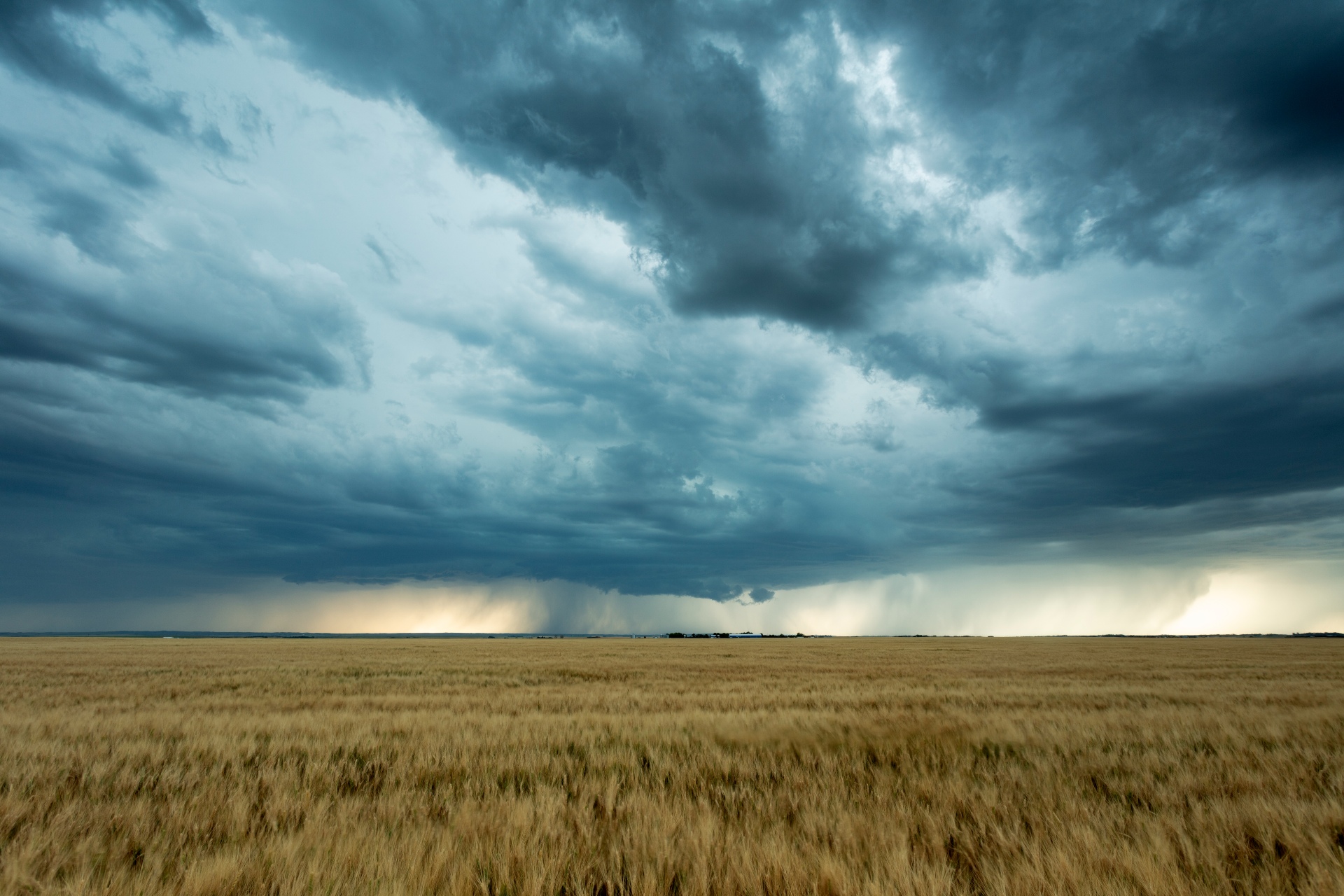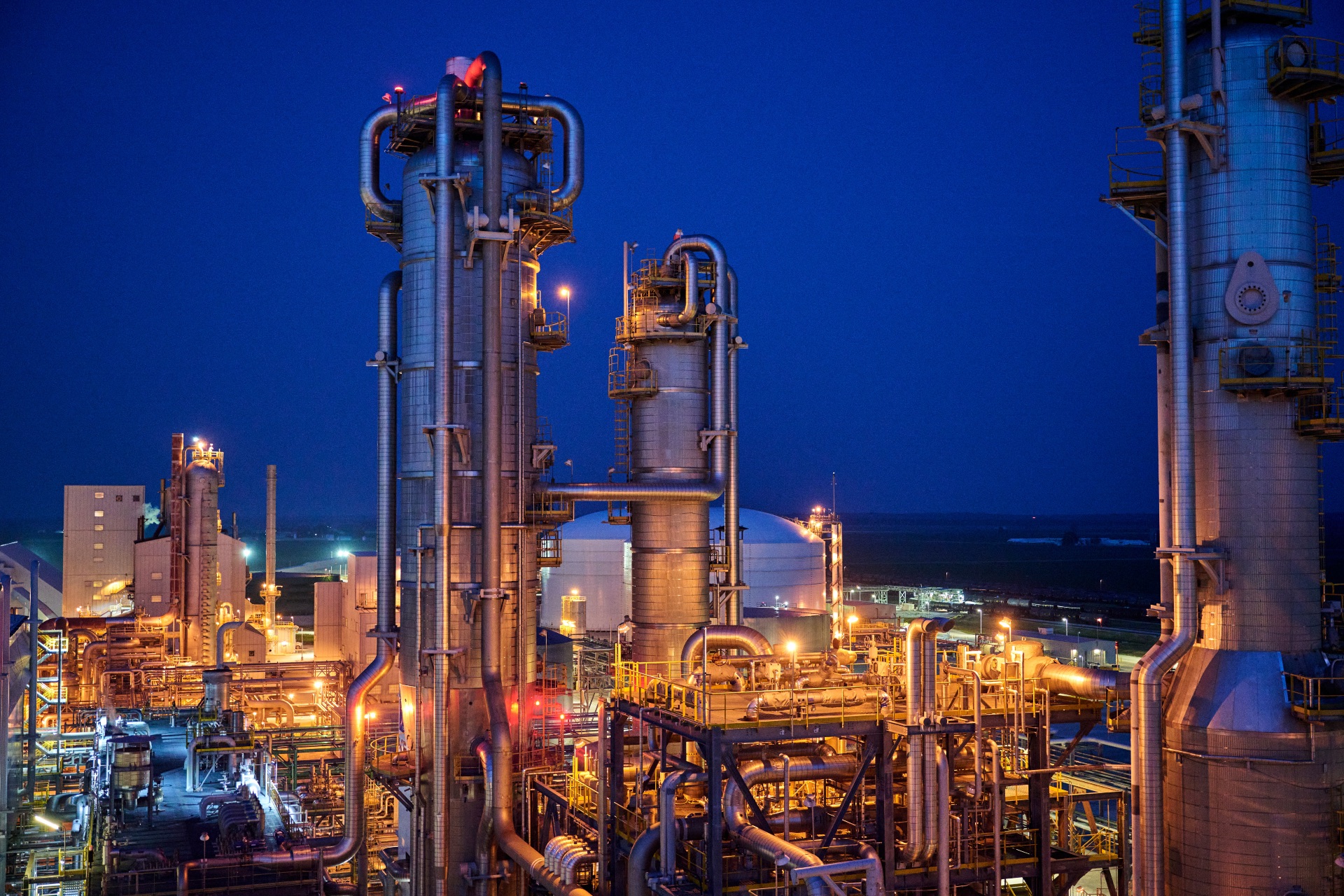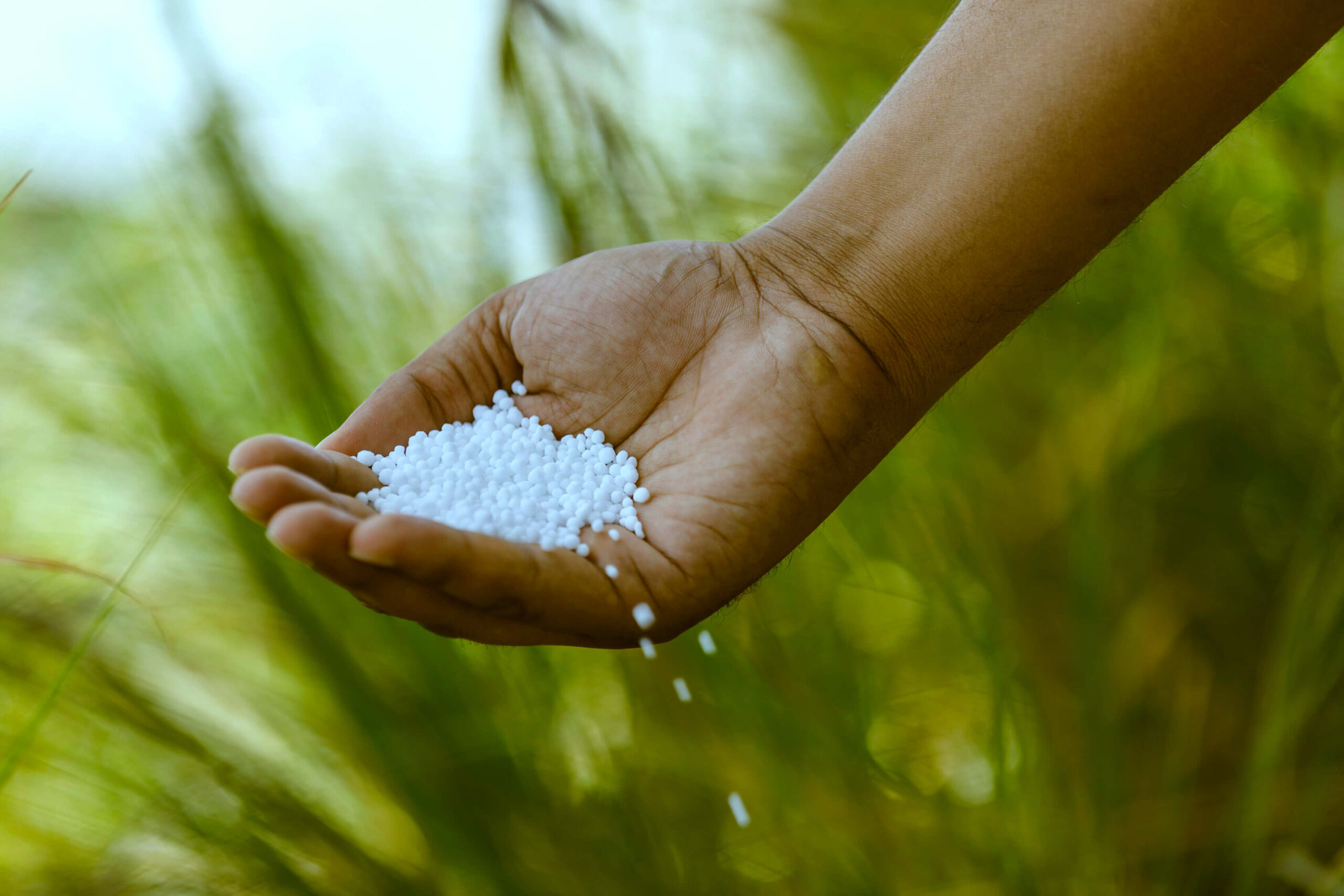Where does nitrogen come from?
Nitrogen is naturally occurring and the most plentiful element in the earth's atmosphere but must be combined into compounds to be taken up by plants.

- Almost 80% of the atmosphere is made up of nitrogen gas, also known as atmospheric nitrogen or N2.
- However, atmospheric nitrogen is not fit for consumption meaning there isn’t always enough nitrogen available to plants.
- Nitrogen has to be combined into compounds that can be taken up by plants.
- In nature, soil bacteria and lightning bring about nitrogen fixation.
- In industry, nitrogen fixation is enabled by the Haber-Bosch process.
Fixation of atmospheric nitrogen
A defining characteristic of atmospheric nitrogen (N2) is the triple bond between its two nitrogen atoms. This bond is one of the strongest in nature. Nitrogen fixation involves breaking atmospheric nitrogen into two separate nitrogen atoms, which then combine with hydrogen or oxygen.
However, it takes so much energy to crack the triple bond that almost no single organism is capable of fixing nitrogen directly from the air.
There are three ways in which nitrogen is fixed from the air and enters the nitrogen cycle:
 Rhizobium bacteria grow in nodules on the roots of leguminous crops
Rhizobium bacteria grow in nodules on the roots of leguminous crops
1. Nitrogen-fixing bacteria
There are some soil bacteria that can break apart atmospheric nitrogen and bind it into ammonia (NH3).
- These bacteria possess the enzyme nitrogenase. Because most bacteria’s nitrogenase is extremely sensitive to oxygen, these bacteria can only fix nitrogen in anaerobic conditions (in the absence of oxygen).
- In agriculture, Rhizobium bacteria (root-knot bacteria) are particularly well known as nitrogen-fixing bacteria. This special bacterium grows in nodules on the roots of leguminous crops such as clovers and pulses. Plants need Rhizobium bacteria to extract nitrogen from the air as they need this nutrient for growth and photosynthesis.
- Plants, in turn, provide carbon and glucose for the growth of the bacteria. The glucose – derived from photosynthesis – is used by Rhizobium bacteria to form ATP, the energy carriers in the nitrogenase reaction: N2 + 8H+ + 8e- + 16 ATP at 2 NH3 + H2 + 16 ADP + 16 Pi. This produces ammonia, which dissolves again in groundwater, forming ammonium (NH4+).

2. Photochemical nitrogen fixation
Nitrogen gas can also be fixed naturally in the atmosphere.
- Farmers have known for centuries that spring thunderstorms can bring a good harvest. Electric discharges from lightning can provide the necessary amount of energy to break apart atmospheric nitrogen by causing nitrogen atoms to react with oxygen. This is referred to as photochemical nitrogen fixation.
- Nitrogen oxides, or NOx, are formed as a result. The ‘x’ indicates that multiple oxides of nitrogen are possible.
- Nitrogen oxides react with water to form inorganic acids, e.g. nitric acid (HNO3). These in turn dissolve well in water, forming nitrate (NO3-). This nutrient nitrogen enters the soil with the rain.
3. Industrial nitrogen fixation
Industrial nitrogen fixation has been possible since the discovery of the Haber-Bosch process, a method of directly synthesizing ammonia from hydrogen and nitrogen, at the beginning of the last century.
The Haber-Bosch Process
The process produces ammonia (NH3) and carbon dioxide (CO2) from natural gas (CH4), air and steam. The overall reaction leading to nitrogen fixation is N2 + 3 H2 -> 2 NH3.
- Fritz Haber developed the process which directly combines nitrogen from the air with hydrogen under extremely high pressures and moderately high temperatures.
- Haber won the Nobel Prize for Chemistry in 1918 for his discovery.
- Carl Bosch later developed the process for industrial scale use. During the process, nitrogen binds to iron, which acts as a catalyst. The fed hydrogen binds to the nitrogen atoms and soaks them loose from the iron. The process occurs in stages, each of which has a limited conversion rate of about 15%. But once the gases have been repeatedly recycled, the conversion is almost complete at 97%.

Applications
Ammonia is one of the main feedstocks of the fertilizer industry, as well as for the plastics and pharmaceuticals industries. Although it is versatile, the Haber-Bosch process is also extremely energy- intensive. It involves high natural gas consumption and releases CO2 into the atmosphere.
The discovery of the Haber-Bosch process is considered one of the most important of all time. Thanks to the Haber-Bosch process, 500 million tonnes of nitrogen fertilizer are produced every year. This fertilizer feeds more than half the world's population, according to the FAO.

Explore our nitrogen portfolio
Our nitrogen portfolio includes ammonia, urea, urea ammonium nitrate, calcium ammonium nitrate, diesel exhaust fluid, and other nitrogen products.
Sources:
OCI Nitrogen (2015). Leven van lucht.
Carolus, E. (2009). Evolutie van de samenwerking tussen vlinderbloemigen en rhizobiumbacteriën. Wageningen Universiteit.
Mulongoy, K. Biological nitrogen fixation. FAO.
Wassink, J. (2013). De waterstof-economie zou in de praktijk wel eens een ammonia-economie kunnen worden. Delta TU Delft.